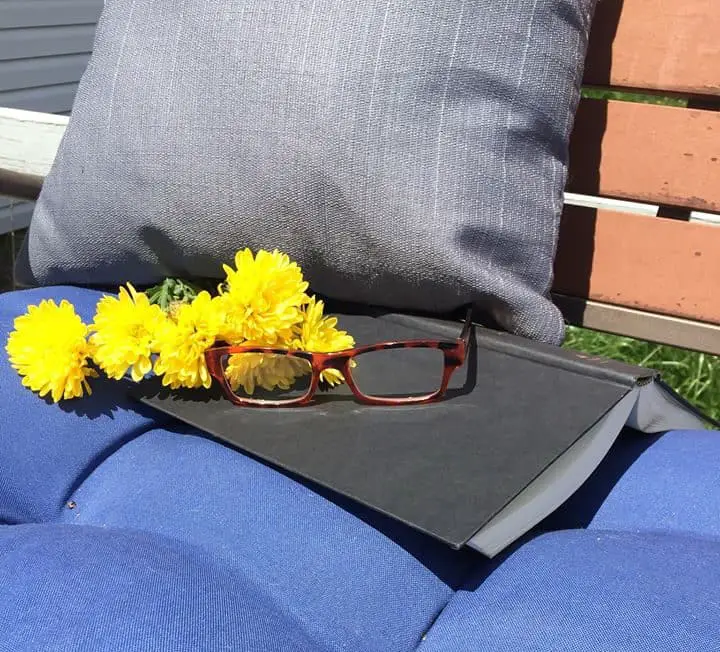
If you’re overwhelmed by the crushing weight of the to do list how do you implement self care?
When you’re juggling too many balls and dropping some it’s hard to believe adding one will improve your life.
Surprisingly, you can add something to your list that eases the burden.
What is the best self care practice that impacts everything? Reading.
How can I make that claim?
First of all, it informs everything.
Reading can help your manage your schedule, eat healthier, start or maintain an exercise habit, improve your relationships, increase your wealth as well as confront medical issues, mental health issues or financial issues.
You can find an expert who has written about any issue causing you stress. Even if you don’t know what you’re dealing with and you’re starting with symptoms and pain, someone has written about it.
Secondly, the practice itself is a top stress reducer. That goes a long way to good self care.
How does reading work as the best self care practice?
Reading impacts you physically
A study in England found that people showed a physical response to reading. Reading was more effective in reducing stress than listening to music or going for a walk. Heart rates slowed and muscles relaxed in as little as six minutes after subjects began reading.
Certainly exercise, healthy eating, massage and relaxation are self care practices that impact us physically. But why overlook the impact that reading has on us physically?
Reading impacts you emotionally
It’s a mini vacation that gets your focus off your daily stresses, anxiety, concerns, irritations, disappointments and discouragements. It shifts your mind into a different gear and can help you readjust your perspective.
It can also serve as an escape, a retreat to another world.
If you connect with a character, you can experience emotions vicariously through them.

Reading impacts you mentally
It can break the cycle of negative thinking.
When your mind is not focused, it can spiral downward into negative thinking. Reading redirects the mind to think the thoughts you’re reading about.
The cycle of negative thinking is broken.
Even better, an inspiring story can lift thoughts up and promote a positive cycle of thinking. When you choose what to read, you choose what to think about. In that way, reading becomes a conscious attempt to redirect your thoughts.
Reading impacts you intellectually
It can give you the dopamine hit of learning new things.
It gives you the chance to learn how to fix the problems you face.
It can be the vehicle to your self education, including every area of self care.
Need to learn how to develop good habits and break bad ones? Read Atomic Habits. Looking for health and nutrition advice? Better relationships? Purpose and meaning? Spiritual growth? For every facet of self care, there is someone with more expertise who has written about it. Stand on their shoulders to implement better self care.
Additionally, studies have found reading helps you have better brain health as you age and may even slow the progression of Alzheimer’s.
Reading impacts you relationally
What you’re reading is also great discussion fodder for small talk at social gatherings.
Book clubs are a great way to interact socially over the topic of a book.
Reading a book together can build bonds and bridges for a group studying a specific topic. Reading aloud as a family is a terrific teaching tool as well as creating common memories.
Reading impacts you spiritually
One of our deepest human needs is finding meaning and purpose in life. Reading is a great way to help us find that both.
Reading the Bible reminds us of truths forgotten or uncovers new spiritual truths.

How do you start a reading habit as a self care practice?
Believe that six minutes is enough
The place to start is in your belief system. You have enough time. You can do everything God has called you to. Remember, six minutes is enough to start feeling the physical effects.
Schedule Reading into your Daily Rhythms
Before bed is a great time to read. Of course, it’s also a good time to spend with your spouse. So, if you like to watch a show together, need to talk or have intimate time, prioritize that first. But, after that, if you have six minutes or more to invest before you crash, spend that time reading.
If you have trouble getting to sleep, reading before bed can be great. Pick your reading material carefully. It might take some trial and error before you figure out what’s going to work and what isn’t. The goal is something that you can put down, something that won’t rev up your mind, something that isn’t too emotionally intense.
You also need to consider lights and screens when reading at bedtime. A printed paper book is the best option when reading before bedtime. Dimming or turning off the overhead light is a good strategy. Keeping in mind your spouse’s need for low and no light is also a consideration.
A mother at home with small children might find that nap time is a good time to read. It can also be a good time to get dishes and cleaning done or take a nap yourself. Evaluate which is your greatest need and make the decision based on what matters most. One option here is to combine an audiobook with house hold chores or exercise. Listening to an audiobook pairs well with folding laundry, walking on a treadmill or riding a stationary bike.
Some people like to fit reading into a morning routine. This works well if you’re reading to learn and you aren’t dealing with babies, small children or other general chaos in the morning. This is a good option if you get up before everyone else, if everyone leaves the house or if you have a commute that is conducive to listening to audiobooks.
After supper clean up might be a good time. Reading aloud to kids before their bedtime kills a lot of birds with one stone. The key strategy here is to apply the Venn Diagram approach and only read what pleases the adults and the kids. Keep looking till you find books that everyone likes. If you can find a series, all the better!
Evenings can be a good time to read for empty nesters. The whirlwind of kids’ activities is over. If you don’t have full slate of evening activities, use the time to read.
Schedule Reading into your Weekly Rhythms
Waiting is a great time to read: hair cuts, doctor’s offices, hospital waiting rooms, after school or after practice pick up.
Or make weekly rest a part of your life. Rest and read.
Schedule Reading into your Annual Rhythms
Vacation reading is in a class by itself. It’s a great time for doorstop novels. Or complicated plots and a thousand characters.
It can also be a great time to learn at a deeper level than during your normal routine. When I was newly diagnosed with Hashimoto’s, I took my Izabella Wentz books on vacation with me to learn how the disease develops and the approaches and strategies for re-gaining health. Brain fog and memory loss are symptoms of Hashimoto’s that, ironically, made it harder to digest the information about it.
I found the stretches of time on vacation what I needed to absorb the material and assimilate the concepts I was learning. It often took many repetitions before the information soaked into my fuddled brain.
Holiday stress is in a class by itself. That means the stress busters need to be there, also. Plan your reading for high stress times accordingly such as short essays or middle grade novels that are breezy reads.

Make a reading date with yourself
If you’re the type of person who schedules every hour, make a reading date with yourself.
If you need to, get a babysitter and go to the coffee shop. Does that feel a little excessive? How much does a therapist cost? Self-directed bibliotherapy can be a lot less expensive.
Another option is to block out time when your spouse is out. Run a bubble bath or light a candle and put on some instrumental music to set the mood. Get stocked up on your favorite hot drink (or cold drink if weather demands it).
Put a little thought and planning into it.
Use Habit Stacking
Link reading to an already established habit. One of the best ways to establish a new habit is to tack it on to something you already do habitually.
Pick the Best Books
Put some time and effort into finding your next read.
You’ll have less frustration in your reading life if you put in the time and effort to find the best books.
There’s nothing like the disappointment of being halfway through a book and finding out that it’s not for you.
Of course, you’re never going to bat 1000, but too many strikes is discouraging. It might tempt you to give up and throw in the towel.
Find a Book Whisperer
I talk about this in lots of my posts, but it’s hard to overemphasize. Having a stack of books that you’re looking forward to is key to a satisfying reading life.
Building that stack isn’t necessarily as easy as it sounds.
But one of the best ways is to find a book whisperer. Someone trustworthy. One principle I’m beginning to believe to my bones is that trust is the scarcest commodity.
Maybe because I currently live in the land of plenty. There’s lots of money, lots of resources, lots of time, lots of food— too much food, actually— lots of clothes, lots of furniture, lots of vehicles.
What is there a scarcity of? Trust. It’s hard to know who to trust.
So when you find someone, hold on with both hands.
And don’t be too disappointed with the ones who let you down. It’s an ongoing process, finding a voice to trust.
Keep looking.
Plus, there are actually books about books. Who knew? It’s a good place to start.
Book Girl by Sarah Clarkson, Honey for the Woman’s Heart by Gladys Hunt and How to Read a Book by Mortimer Adler.
Want to know more? Check out 9 Surprising Benefits of Bibliotherapy.
